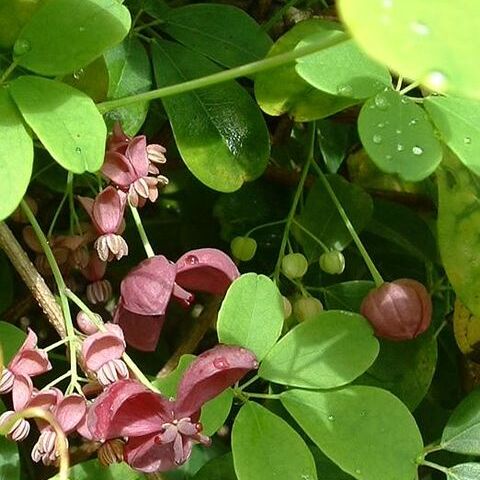Glabrous, deciduous or almost evergreen, monoecious lianes. Buds with many imbricate scales. Lvs long-petiolate, digitately 3-or 5-foliolate. Leaflets petiolulate; apices ± emarginate. Fls in pendent axillary racemes, the ♀ larger and toward the base, the ♂ smaller and at apex. ♂ fls: sepals 3; petals 0; stamens 6, free; anthers subsessile; ovary rudimentary. ♀ fls: sepals 3; staminodes 6; carpels 3-(12); ovules in longitudinal rows; style 0. Frs berry-like but dehiscent, usually 3 to each fl., large, oblong, with numerous black seeds embedded in translucent gelatinous pulp.
Vines , twining. Leaves palmately compound; leaflets 3-5, articulate at base of blade and at base of petiolule. Inflorescences racemose, pistillate flowers proximal to staminate flowers in each raceme. Flowers dimorphic: pistillate flowers larger and longer pediceled than staminate flowers; sepals mostly brownish to purplish. Staminate flowers: pistillodes present. Pistillate flowers: pistils (3-)-8(-15); placentation laminar; staminodes present. Fruits follicles, fleshy, dehiscent along adaxial suture. Seeds 100-several hundred. x = 16.

